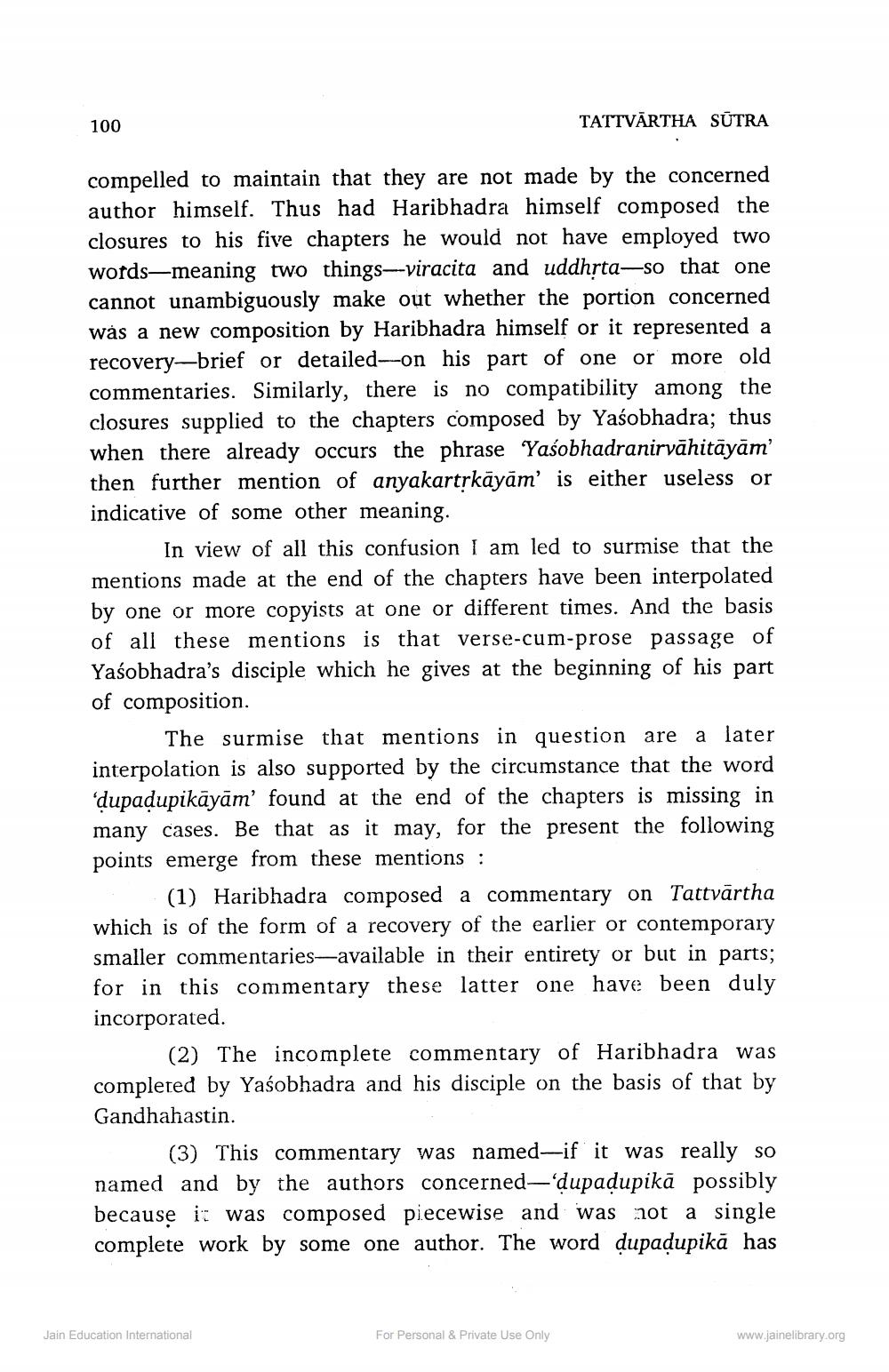________________
100
TATTVĀRTHA SŪTRA
compelled to maintain that they are not made by the concerned author himself. Thus had Haribhadra himself composed the closures to his five chapters he would not have employed two words—meaning two things--viracita and uddhrta—so that one cannot unambiguously make out whether the portion concerned was a new composition by Haribhadra himself or it represented a recovery-brief or detailed-on his part of one or more old commentaries. Similarly, there is no compatibility among the closures supplied to the chapters composed by Yaśobhadra; thus when there already occurs the phrase Yaśobhadranirvāhitāyām' then further mention of anyakartrkāyām' is either useless or indicative of some other meaning.
In view of all this confusion I am led to surmise that the mentions made at the end of the chapters have been interpolated by one or more copyists at one or different times. And the basis of all these mentions is that verse-cum-prose passage of Yaśobhadra's disciple which he gives at the beginning of his part of composition.
The surmise that mentions in question are a later interpolation is also supported by the circumstance that the word dupadupikāyām' found at the end of the chapters is missing in many cases. Be that as it may, for the present the following points emerge from these mentions :
(1) Haribhadra composed a commentary on Tattvārtha which is of the form of a recovery of the earlier or contemporary smaller commentaries available in their entirety or but in parts; for in this commentary these latter one have been duly incorporated.
(2) The incomplete commentary of Haribhadra was completed by Yaśobhadra and his disciple on the basis of that by Gandhahastin.
(3) This commentary was named-if it was really so named and by the authors concerned-dupadupikā possibly because it was composed piecewise and was not a single complete work by some one author. The word dupadupikā has
TL
Jain Education International
For Personal & Private Use Only
www.jainelibrary.org




